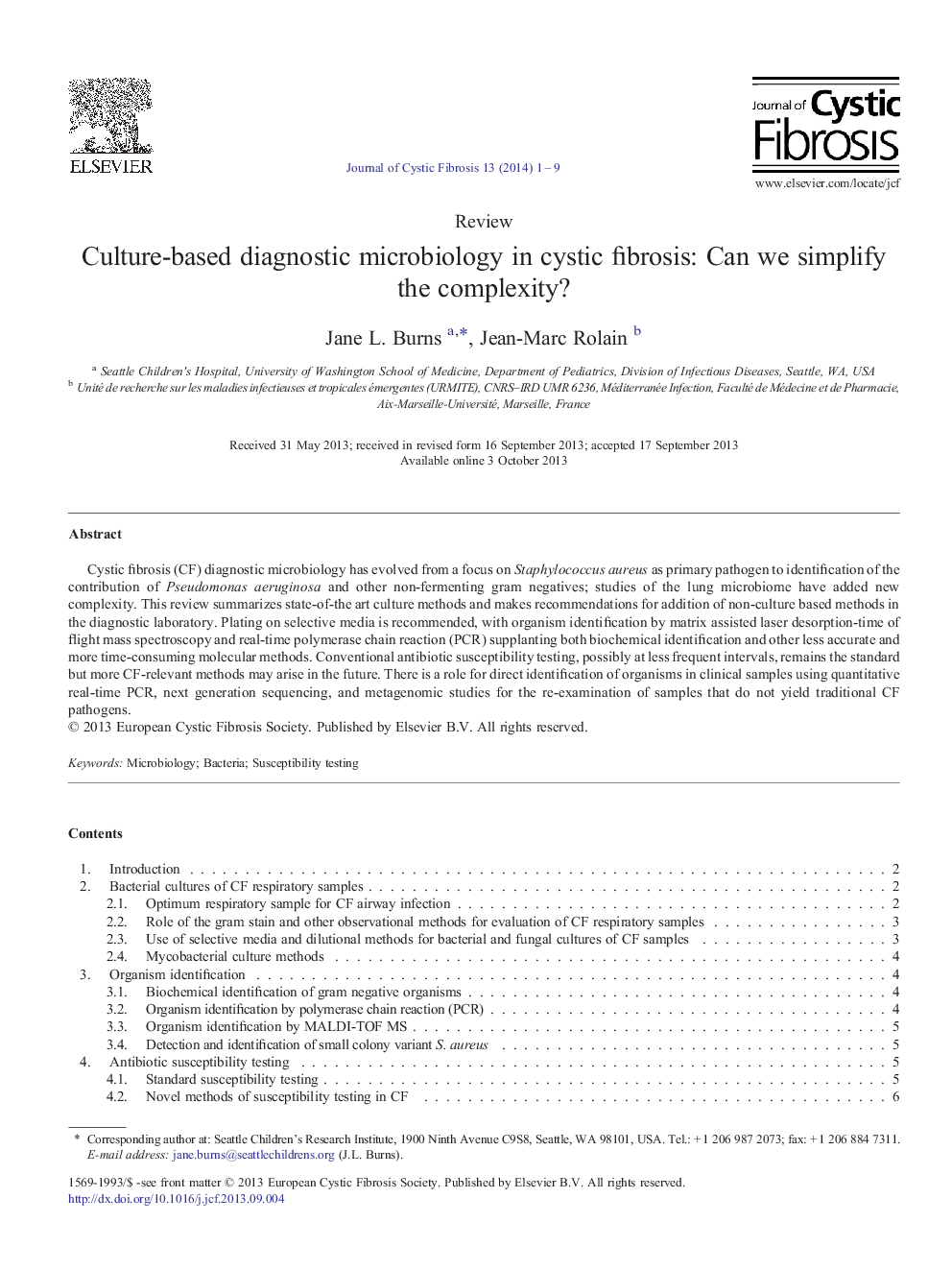| Article ID | Journal | Published Year | Pages | File Type |
|---|---|---|---|---|
| 6240488 | Journal of Cystic Fibrosis | 2014 | 9 Pages |
Cystic fibrosis (CF) diagnostic microbiology has evolved from a focus on Staphylococcus aureus as primary pathogen to identification of the contribution of Pseudomonas aeruginosa and other non-fermenting gram negatives; studies of the lung microbiome have added new complexity. This review summarizes state-of-the art culture methods and makes recommendations for addition of non-culture based methods in the diagnostic laboratory. Plating on selective media is recommended, with organism identification by matrix assisted laser desorption-time of flight mass spectroscopy and real-time polymerase chain reaction (PCR) supplanting both biochemical identification and other less accurate and more time-consuming molecular methods. Conventional antibiotic susceptibility testing, possibly at less frequent intervals, remains the standard but more CF-relevant methods may arise in the future. There is a role for direct identification of organisms in clinical samples using quantitative real-time PCR, next generation sequencing, and metagenomic studies for the re-examination of samples that do not yield traditional CF pathogens.
